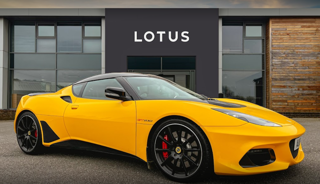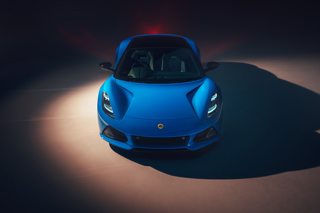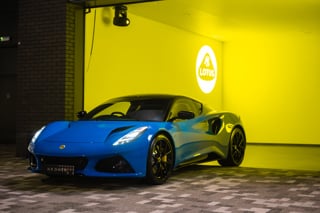Lotus believes that its time has come and it is bristling with determination.
The mantra of its late founder, Colin Chapman, was always to cut weight to increase performance. As a result – 60 years on from its formation – Lotus has a line-up of extremely lightweight cars that go like stink.
The skinny profile derives in part from the fact that the cars are as compact as possible, consistent with containing two people in safety.
More comfort gets dialled in as you pay more. Also keeping the cars light is the construction method of aluminium chassis and composite body.
Those basics should earn Lotus the ‘polar bear gratitude’ trophy in the environmental awards for sports cars.
The next award
The next award would probably go to the electric sports car, the Tesla. Lotus is playing a major part in the development of that car and may have its own all-electric car before long.
A barely disguised plan of a Lotus powered by four wheel motors was on the boardroom table in December, together with a spec that suggested a 0–60mph time of less than four seconds.
Development is funded by its owner, Proton of Malaysia, which is beginning to generate real synergy from the relationship.
The Satria Neo was in part developed by the Norfolk company.
The Proton brand is doing far better in its home market than was the case for many years, and ratings of Proton and its dealers in the UK are both rising.
Also, Proton has recapitalised Group Lotus to the tune of £60m and is investing a further £60m over the next two years.
Eight-year corporate plan
Mike Kimberley, who started his second stint as Lotus chief executive officer in 2006, has growing admiration for Proton and complete confidence that in working now on an eight-year corporate plan, he is working in the real world with a real expectation that it will be fully funded.
As reported in the December 19 issue of AM, Kimberley’s frustration is reserved for government – both local and national.
First was the failure at planning of an application to build a small wind farm to make the factory site self-sufficient with low-cost energy.
It took an appeal to get the approval. Then came a rates assessment that imposed a £159,000 increase on the previous year.
Then a £706,000 pension levy came out of the blue, despite the strong balance sheet, improved operations and a profit of £2m for the year to the end of March 2008 compared with a loss the previous year of £7m.
Kimberley has lobbied his political contacts – including the Chancellor – over how hard it is for UK manufacturing to cope even without a torrent of new liabilities.
Evora on the all-new platform
Evora is coming early next year and will be Lotus’s first all-new platform for 13 years. It is due to be the start of a golden period in the company’s history and is styled as the “first 2+2 mid-engined sports car on the planet”.
It was shown in near-final form at the London Motor Show and in a more detailed display at Los Angeles in November.
The first of 19 validation prototypes have just come off the production line. Press tests will be early in spring and dealers should have it for sale by May.
The 2+2 claim will be a bit of a stretch for tall drivers, but short drivers might get two kids in the back.
Evora options
Evora will initially be offered as a manual hardtop, with convertibles and automatic versions to follow later.
It uses a Toyota engine – the two companies have been soulmates since Toyota helped save Lotus from bankruptcy by deferring terms of engine payments – and is a 3.5-litre V6 equipped with dual intelligent variable valve timing.
It produces 276bhp and around 250lb-ft and should accelerate from 0-60mph in less than five seconds, with an estimated top speed of 160mph. CO2 emissions are 225g/km. Prices are expected to start at around £50,000.
Evora is the first of two giant leaps upmarket for Lotus. The second is known as the new Esprit but is expected to have its own name to reflect its distinct style and nature.
It is designed to be a genuine supercar and could be well timed as a low-price offering in that category just as the world pulls out of recession – hopefully no later than the end of 2010.


















Login to comment
Comments
No comments have been made yet.